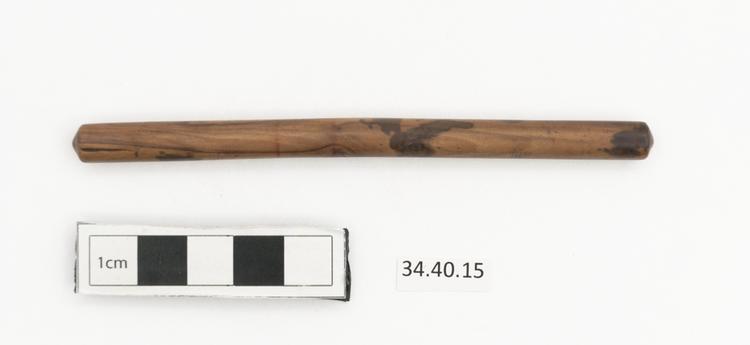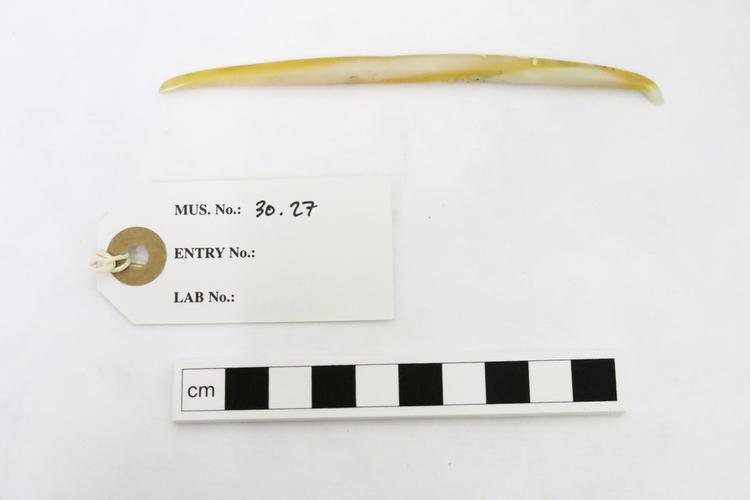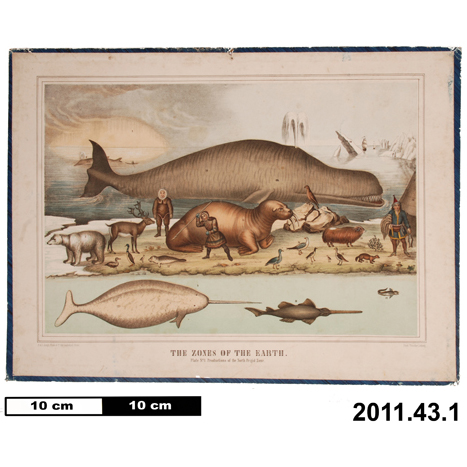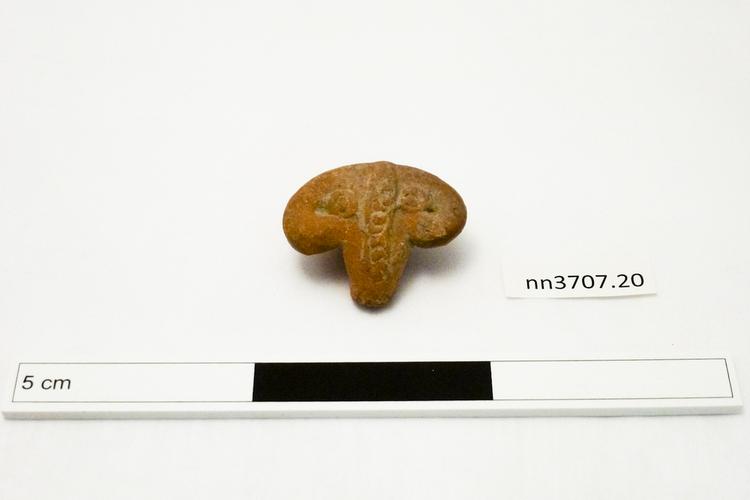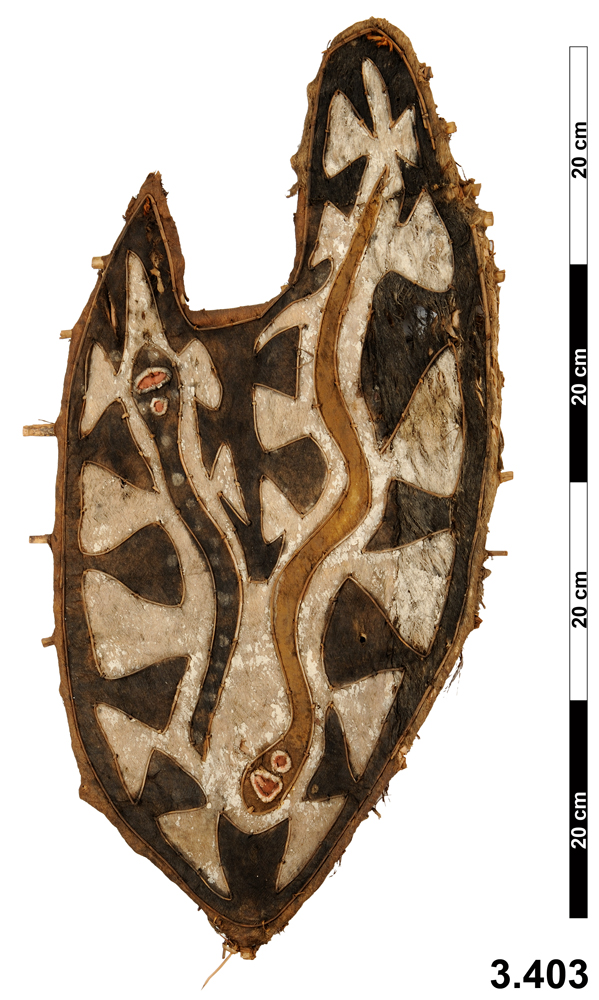
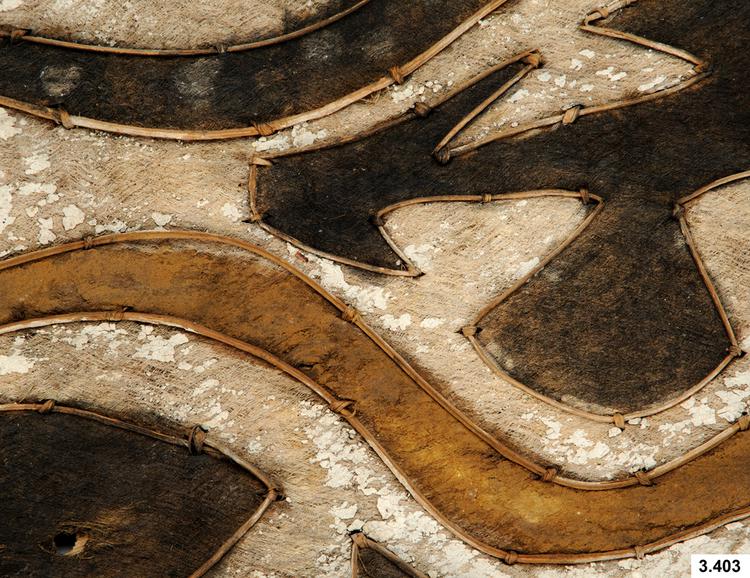
Dance shield of asymmetrical heart shape, one top lobe is rounded and high, the other pointed and low. The frame of the shield is made from grid of split cane and the whole shield is edged with the same. To this scaffold are tied with pandanus (?) fibre several sago leaves which are then overlaid with a coarse barkcloth. To this barkcloth are stitched thin leaf mid ribs to create zones which have then been painted in a chocolate brown and white. The design depicts two snakes, one going up the other going down, surrounded by rounded dovetail forms.
Dance Shield, Elema People, Orokolo, Gulf Province, Papua New Guinea. Dance shields of this type are not common in museum collections, and were never very common in the Papuan Gulf. They mimic the shape of wooden shoulder shields worn underarm by archers in this region of New Guinea, and were worn by men as an ornamental prop during their dances. The snake was a powerful symbol in the Papuan Gulf, where some of the world’s most venomous species (certain taipans and kraits) live. For the Elema, the snake embodies the evil spirit Ove-Hahu, who causes accidents, snakebites and other sudden severe illnesses. To die from a snake bite was viewed as the least dignified death, at the opposite pole to a warrior’s death in battle. Although Elema shields usually feature symbols of the warrior’s clan, here we might interpret the artist as creating a defiant and mocking theme to his imaginary enemy. Bamboo, banana leaf, barkcloth, pigment, vegetable fibre. Late 19th Century. Purchased by the Horniman Museum from the art dealer Mr S. G. Fenton in 1903.
fighting



